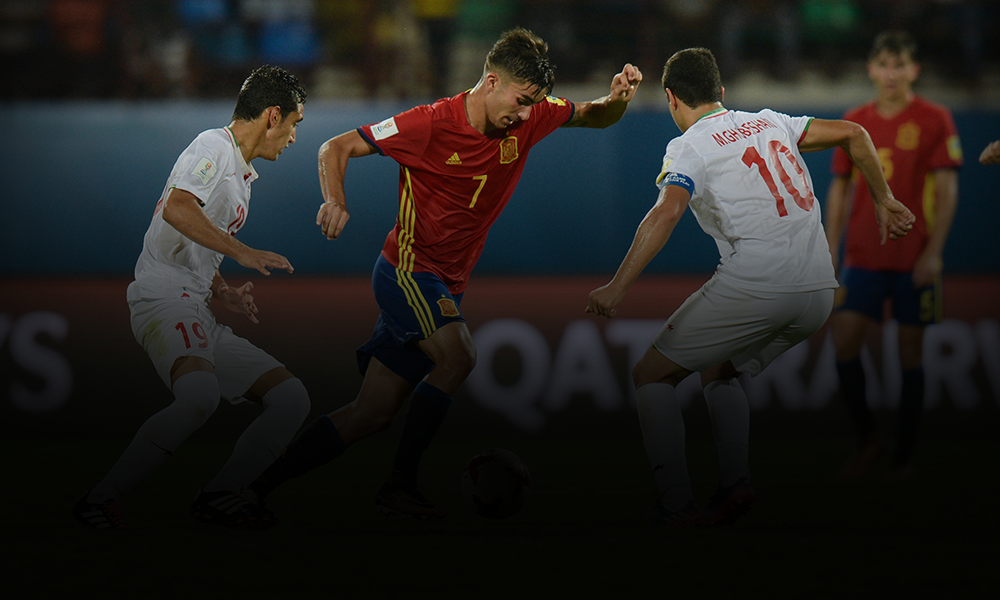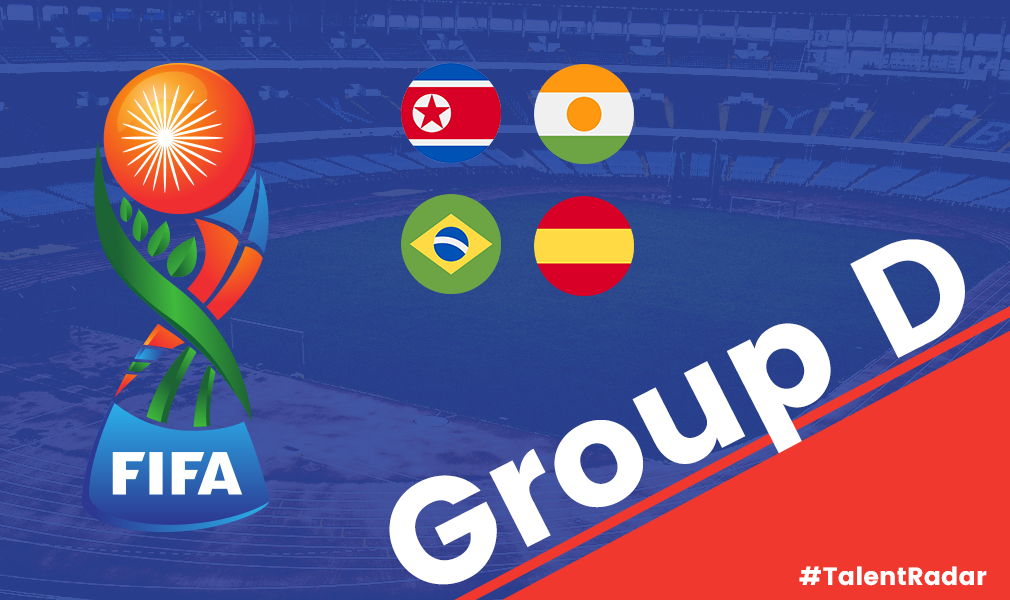Spain’s national team dominated the world for a prolonged period of time with their style of play, controlling both offensive and defensive phases of the game via possession of the ball. Greg Lea brings up a page from the Euro 2012 when Spain faced Croatia and uses this to highlight their command over the game.
“What’s the solution [to teams who sit deep and defend against Spain]? Think quickly, look for spaces. That’s what I do: look for spaces. All day. I’m always looking. All day, all day”. Xavi Hernandez
At first glance, this may appear a strange game to select as representative of what is arguably the greatest international side of all time. Spain, capable at times of the most gloriously intricate football, produced a cautious and tentative display in their final group game of Euro 2012, and were only sure of qualifying at Croatia’s expense when substitute Jesus Navas netted in the 88th minute. Yet this match best epitomises what this Spanish team stood for: control of the game via possession of the ball.
Perennial underachievers for decades, everything changed for Spain in 2008 when they defeated Germany in the final of the European Championship in Vienna. Victory at the 2010 World Cup followed, and Spain were lauded for their stunning tiki-taka style, based on quick, short passing; the monopolisation of possession; and high, aggressive pressing.
The roots of this philosophy lay in Total Football, although for Spain the focus was on constant circulation of the ball, not players. Johan Cruyff, the figurehead of the great Ajax and Holland teams of the sixties and seventies, implemented the style of play as Barcelona manager in 1988, winning the Catalans’ first European Cup as well as four La Liga titles. By Euro 2012 – and using the same captivating methods – Pep Guardiola had amassed fourteen trophies and millions more admirers in four seasons with his boyhood club. Tiki-taka ruled the world.
Yet as the tournament unfolded in Poland and Ukraine, there were murmurings of discontent. Spain’s style became the principal debate of the summer: brilliant or boring? Italy had frustrated them in the group’s opening game, a 1-1 draw where Spain looked sluggish and predictable. A comprehensive 4-0 defeat of Ireland gave them the goal difference edge over Croatia – who also had 4 points – ahead of their showdown in Gdansk, a game that critics pointed to as evidence that Spain’s aestheticism had descended into numbing, joyless superiority.
Croatia pressed well in the first 15 minutes, robustly harrying Spain and breaking up their rhythm with fouls. The tone, though, had already been set: 78% Spanish possession.
That, though, does not tell the whole story. Spain struggled early on. Fernando Torres drifted wide but was denied space, his only notable contribution a meandering run and powerful shot down the right; Xabi Alonso and Gerard Pique tried their luck from distance, meanwhile, but Spain were not fashioning clear chances. There was a distinct lack of penetration and, with only Jordi Alba offering width, Croatia were able to remain compact and narrow. Spain needed Alvaro Arbeloa, a naturally conservative full-back, to provide overlapping runs in order to drag Croatian left-back Ivan Strinic wider and open up space, yet he rarely ventured forward with any purpose.
For all their lack of incision, however, Spain had control. Tiki-taka is too often labelled as an attacking approach, its technical excellence confused for adventurous excitement. There is actually a prominent defensive dimension to it, based on the simple premise that it is impossible to concede a goal when in possession.
It was this facet of the philosophy that was increasingly coming to the fore in Euro 2012. In 2008, for instance, Spain averaged 27 passes per shot. This had risen to 34 in 2010, and after the final against Italy – a signature performance and 4-0 victory that blew the Azzurri away – the 2012 figure sat at 45.
It was clear that Spain were minimising the variables and taking fewer risks in Poland and Ukraine, as seen in the tussle with Croatia. The particular circumstances of that game affected this (Croatia not Spain, after all, were the team who needed a win), but there was a growing sense that Vicente Del Bosque’s side had adopted a safety-first approach. Movement of the ball and players was slow, the tempo rarely quickened. Spain did not seek to exploit the gaps that periodically opened up when the Croatians found themselves out of position, and there were no runs into the box from midfielders. Only Andres Iniesta, described by the Guardian’s Rob Smyth as “simply the most beautiful player in football history”, demonstrated any sort of directness. Spain were clinical, just not in the way we usually think of when the word is used in football parlance, their endless passing seen by some as nothing more than cold and emotionless efficiency.
Football involves two teams though, a fact that seemed to have been forgotten throughout the summer of 2012. A side’s performance does not exist of itself, but is affected by the wider context. Even if tiki-taka was primarily used to protect themselves, as some critics argued, it was still a proactive form of defending; Spain were the ones looking to get on the ball and hounding the opposition to win it back.
Croatia – just like every team who had faced Spain during their dominant spell with the notable exception of Marcelo Bielsa’s Chile in 2010 – adapted their tactics in anticipation of the high press and control of the ball. When they were able to break past the initial stage of Spanish harrying, Croatia failed to get men up the pitch quickly enough to support Mario Mandzukic, who was left isolated up top. Luka Modric, consistently fantastic in more of a regista role, played as a number 10 purposely to sit on Xabi Alonso and Sergio Busquets; Ivan Rakitic, a wonderfully creative player, was similarly asked to focus on the defensive job alongside Dynamo Kyiv’s Ognjen Vukojevic.
Spain’s cautiousness was thus at least partly enforced: an opponent who sits deep and compact leaves very little space, and the best response to that is to be patient, protect yourself and wait. By 2012, moreover, Spain understandably lacked the fearfulness that characterises so many sides in pursuit of their first title. There was pressure this time, a sense that they had something to lose.
The key change came after an hour, Jesus Navas replacing Torres. Just a few seconds earlier, Modric had skipped past Sergio Ramos and produced a wonderful outside-of-the-foot cross to Rakitic, whose header was beaten away by Casillas. A Croatian goal then could have been decisive. This was a real scare for the holders.
When playing, as Spain did, with a high line and high press, the pitch is squeezed vertically, so it becomes hugely important to make it big horizontally. With Navas on the right and Alba playing almost as a left-winger, Croatia were stretched for the first time. The then Sevilla winger’s pace meant he could be fed balls on the run; his first involvement, indeed, saw him play a one-two and then sprint behind Strinic.
David Silva moved up front into the false nine role, which was later taken over by Cesc Fabregas. The deployment of a midfielder in this position seemed to infuriate some, yet it is perhaps again better explained with reference to the tactics Spain routinely encountered as a response to their possession-based style: with the opposition defence so deep, a striker’s only possible movement is back towards the ball, and since this means he often ends up in midfield zones, it made sense to use someone like Fabregas as the nominal striker. However, it is difficult to fully separate this tactic with the overall obsession with control: with Iniesta drifting inside so frequently from the left and Fabregas or Silva playing furthest forward, Spain essentially fielded five central midfielders in the same team.
The goal, as it happens, was quintessential false nine play. Croatia, fuelled by the growing realisation that they were heading out of the tournament, had gradually shifted further up the pitch. With two minutes remaining, Alonso, suddenly with masses of time in the centre, slipped the ball into Fabregas, who had dropped back untracked into midfield. With room to turn, he lofted a lovely ball through for Iniesta, who chested it down and stabbed it into the path of Navas on the half-volley, the substitute walking the ball into an unguarded net. Spain were through, the trophy still theirs to lose. Space had been found.
Written by Greg Lea
- From the Catenaccio to the 3-5-2: Italy’s love affair with tactics and strategy - March 25, 2015
- Euro 2012: Croatia 0-1 Spain | Epitome ofthe Control of the Game - February 11, 2015
- Catenaccio: Inter’s Tactical Set-Up Under Helenio Herrera - October 20, 2014
























































